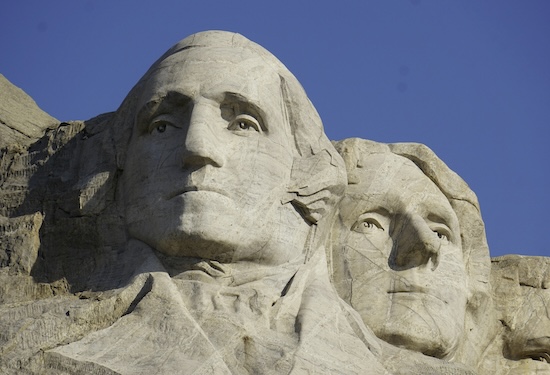
From Lewis and Clark to the Great Depression: A Look at the History of North Dakota
October 14, 2024
A Journey Through Time: The History of Montana Unveiled
October 18, 2024From the Great Plains to Mount Rushmore: The History of South Dakota
South Dakota has a rich and diverse history that spans thousands of years. From its earliest inhabitants, the Native American tribes, to the arrival of European settlers and the creation of iconic landmarks like Mount Rushmore, the history of South Dakota is filled with fascinating events and influential individuals. Join us as we explore the past and uncover the stories that have shaped this unique state.
Native American Heritage: Learn about the indigenous tribes that have inhabited South Dakota for thousands of years and their rich cultural traditions.
South Dakota has a deep and meaningful Native American heritage that dates back thousands of years. Various tribes, such as the Lakota, Dakota, and Nakota, have called this land home and have left a lasting impact on the state’s culture and traditions. From their spiritual beliefs and ceremonies to their art and storytelling, the indigenous tribes of South Dakota have a rich cultural heritage that is worth exploring. By learning about their history and traditions, we can gain a deeper understanding and appreciation for the Native American influence in South Dakota.
European Exploration and Fur Trade: Discover how European explorers, such as French trappers and traders, first encountered the land that would become South Dakota.
European exploration of what is now South Dakota began in the 18th century with French trappers and traders. These explorers were drawn to the area by the abundance of fur-bearing animals, such as beavers, which were highly valued in the European fur trade. They established trading posts along the rivers, such as the Missouri and the Big Sioux, and formed relationships with the Native American tribes in the region. The fur trade brought significant changes to the area, both economically and culturally, as European goods and ideas were introduced to the Native American populations. This period of exploration and trade laid the foundation for the later settlement and development of South Dakota by European settlers.
Lewis and Clark Expedition: Follow the famous expedition led by Meriwether Lewis and William Clark as they explored the western territories, including parts of South Dakota.
The Lewis and Clark Expedition, also known as the Corps of Discovery, was a landmark journey that took place from 1804 to 1806. Commissioned by President Thomas Jefferson, the expedition aimed to explore and map the newly acquired western territories of the United States, including parts of South Dakota. Led by Meriwether Lewis and William Clark, the expedition faced numerous challenges as they navigated through unfamiliar terrain, encountered Native American tribes, and braved harsh weather conditions. Their exploration of South Dakota provided valuable insights into the geography, flora, and fauna of the region, as well as establishing diplomatic relations with Native American tribes along the way. The Lewis and Clark Expedition remains a significant chapter in the history of South Dakota and the broader exploration of the American West.
Homesteading and the Dakota Territory: Explore the settlement of the Dakota Territory and the challenges faced by homesteaders in the late 19th century.
In the late 19th century, the Dakota Territory attracted thousands of settlers looking to claim their own piece of land through the Homestead Act of 1862. Homesteading offered an opportunity for individuals and families to establish a new life and cultivate the land. However, the reality of homesteading in the Dakota Territory was far from easy. The harsh climate, limited resources, and isolation posed significant challenges for homesteaders. Many struggled to survive and make a living off the land, facing droughts, blizzards, and crop failures. Despite these hardships, some persevered and successfully established thriving communities, contributing to the growth and development of the Dakota Territory. The story of homesteading in the late 19th century is a testament to the resilience and determination of the pioneers who shaped the history of South Dakota.
The Creation of Mount Rushmore: Learn about the vision and execution behind the iconic Mount Rushmore National Memorial, featuring the faces of four U.S. presidents.
The idea for Mount Rushmore was conceived by South Dakota historian Doane Robinson, who wanted to create a tourist attraction that would draw visitors to the state. He envisioned a sculpture carved into the granite cliffs of the Black Hills that would honor important figures from American history. Robinson enlisted the help of sculptor Gutzon Borglum, who had previously worked on a similar project in Georgia.
Borglum chose to depict four U.S. presidents on the monument: George Washington, Thomas Jefferson, Abraham Lincoln, and Theodore Roosevelt. These presidents were chosen for their significant contributions to the nation and their representation of different time periods in American history.
The construction of Mount Rushmore began in 1927 and took 14 years to complete. Borglum and his team of workers used dynamite to remove large sections of rock and then meticulously carved the faces of the presidents using jackhammers and other tools. The faces were sculpted to be 60 feet tall, with each eye measuring 11 feet wide.
Despite the challenges and setbacks faced during the construction process, Mount Rushmore was finally unveiled to the public in 1941. Today, it stands as a symbol of American history and a testament to the skill and dedication of the artists and workers who brought Robinson and Borglum’s vision to life.
Here’re eight other things America’s 40th state has to offer:
- Mount Rushmore: South Dakota is home to one of the most iconic landmarks in the United States – Mount Rushmore. This massive sculpture features the faces of four American presidents – George Washington, Thomas Jefferson, Theodore Roosevelt, and Abraham Lincoln – carved into the granite mountainside. It is a must-visit attraction for history buffs and nature lovers alike.
- Badlands National Park: Located in southwestern South Dakota, Badlands National Park is a unique and breathtaking natural wonder. The park features rugged rock formations, deep canyons, and expansive prairies, creating a stunning landscape that is perfect for hiking, camping, and wildlife viewing. Visitors can also explore the park’s fossil exhibits and learn about the area’s rich paleontological history.
- Black Hills National Forest: Covering over 1.2 million acres, the Black Hills National Forest is a haven for outdoor enthusiasts. This beautiful forest offers a wide range of recreational activities, including hiking, biking, fishing, and camping. The forest is also home to several scenic drives, such as the Needles Highway and the Spearfish Canyon Scenic Byway, which showcase the area’s natural beauty.
- Custer State Park: Custer State Park is a paradise for nature lovers and wildlife enthusiasts. Spanning over 71,000 acres, the park is home to a diverse range of wildlife, including bison, elk, pronghorn, and bighorn sheep. Visitors can enjoy scenic drives, hiking trails, and even go on a wildlife safari to get up close and personal with these majestic creatures.
- Historic Deadwood: Step back in time and visit the historic town of Deadwood, where the Wild West comes to life. This former gold rush town is known for its rich history, including the infamous shooting of Wild Bill Hickok. Visitors can explore the town’s museums, take a guided tour, or try their luck at one of the many casinos.
- Crazy Horse Memorial: Located in the Black Hills, the Crazy Horse Memorial is a monumental sculpture that honors the Native American warrior Crazy Horse. When completed, it will be the largest sculpture in the world. Visitors can learn about Native American culture and history at the on-site museum and witness the ongoing construction of the sculpture.
- Sioux Falls: Sioux Falls, the largest city in South Dakota, offers a mix of urban amenities and natural beauty. The city is named after the stunning waterfalls on the Big Sioux River, which can be admired from several parks and trails. Sioux Falls also boasts a vibrant downtown area with shops, restaurants, and cultural attractions, making it a great destination for both city and nature lovers.
- Personalized Newspapers: If they’re ever looking for the perfect gift to get someone in their life, South Dakotans can have a My FrontPage Story shipped directly to their doorstep.
Written by Ubersuggest




